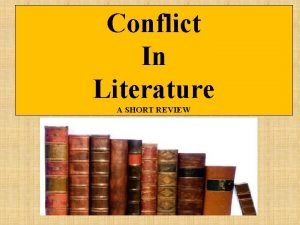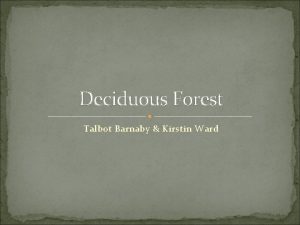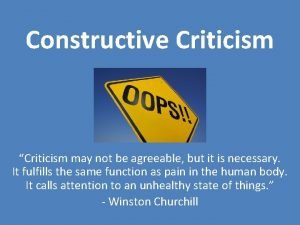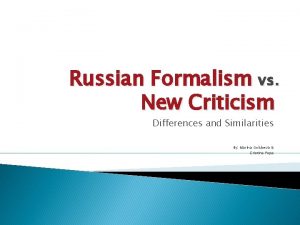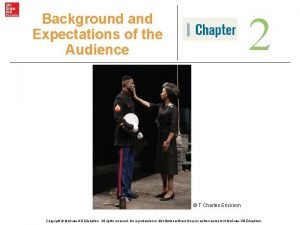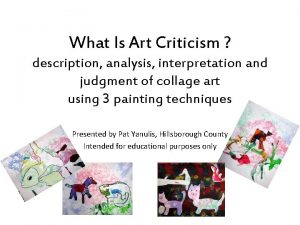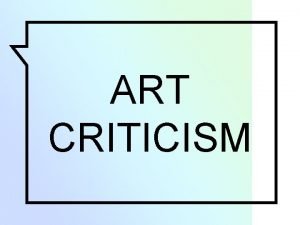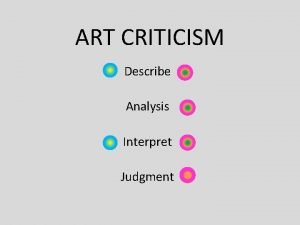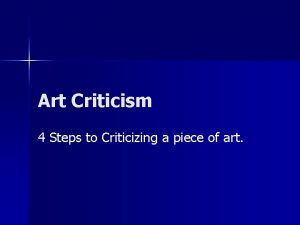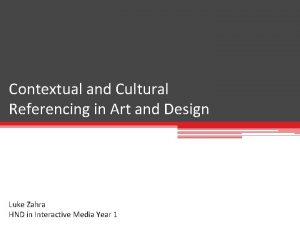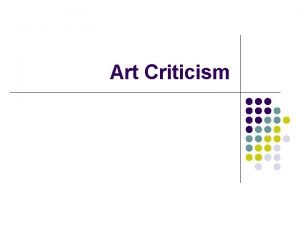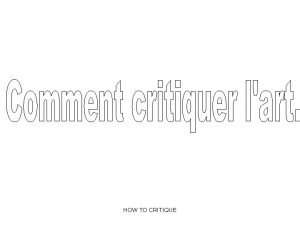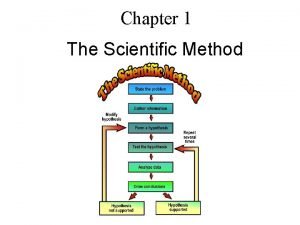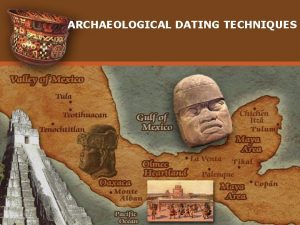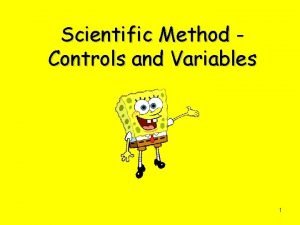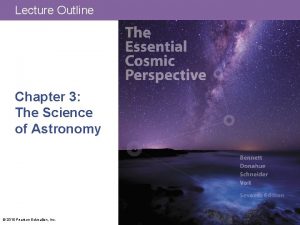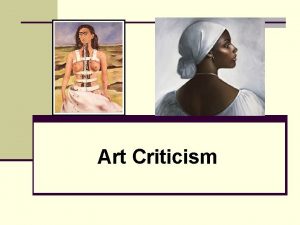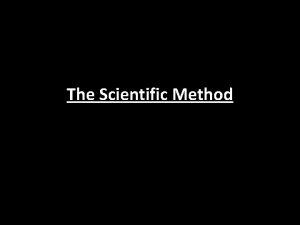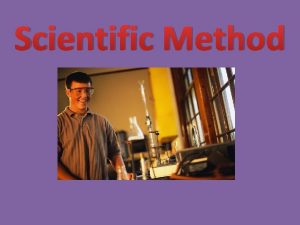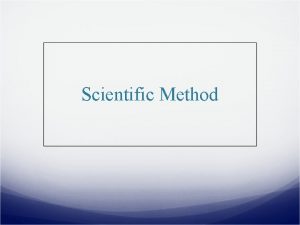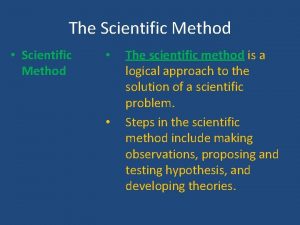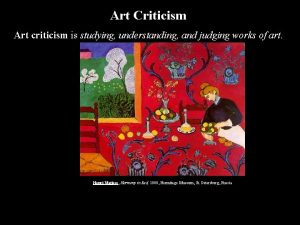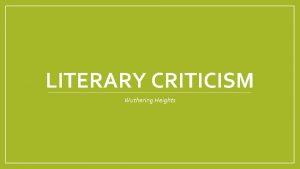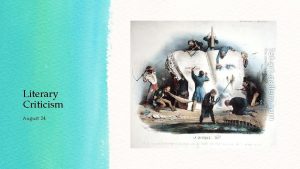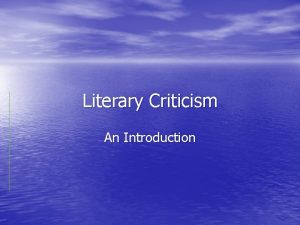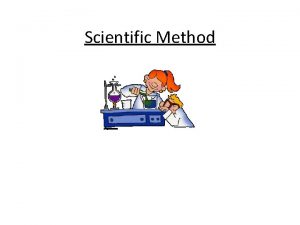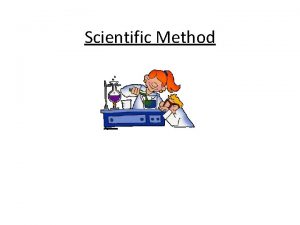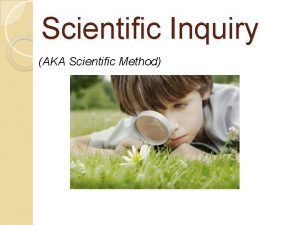Scientific Method and Art Criticism Kirstin Nelson Morgan























- Slides: 23

Scientific Method and Art Criticism Kirstin Nelson Morgan Woods

Scientific Method The scientific method is a type of investigative process which a problem is first identified, a hypothesis is made, an experiment is done, and then data and a conclusion are reached.

The Steps • • • Make an observation Propose a hypothesis Design and perform and experiment Collect and analyze data Reach a conclusion If hypothesis is disproved make a new one and run test again.

Lava in a Cup Tools Glass Jar ¼ measuring cup 1 teaspoon Materials Vegetable oil Water Salt

Experiment Fill the glass about 3/4 full of water. Add about 5 drops of food coloring (optional) Slowly pour the vegetable oil into the glass. Now the fun part: Sprinkle the salt on top of the oil. • Watch the lava move up and down in the glass. • Add another teaspoon of salt to keep the effect going • •

Tools and Materials

Experiment in Action http: //www. youtube. com/watch? v=_JEH 1 myk 1 Cw&feature=youtu. be

Art Criticism Art criticism means breaking down a piece of artwork by describing it, analyzing it, interpreting it, and finally judging it.

Arnolfini Portrait Jan Van Eyck

Name- Arnolfini Portrait Artist- Jan Van Eyck Date- 1434 Description of work- Painting of a man and woman. The setting is in a bedroom and both are well dressed. The man is holding the woman’s hand a dog sits at their feet Analysis- Notice the mirror, rosary beads, chandelier, single lit candle, and position of the dog. The position of these items is significant and helps to pull meaning from the painting.

Interpretation- When we look at this painting we see the placement of the mirror as a symbol for balance because it sits between the man and woman. The mirror may also represent the ability to see oneself for who they truly are and transparency to others so you may not appear or become deceitful. When you look closely at the mirror you will see two other figures. These could be witnesses to the marriage of the man and woman or the painter of the portrait. The dog and clothing of the man and woman may represent their status. The dog could also be a symbol for loyalty. There is a single lit candle in the chandelier which may represent the unity of two becoming one as they enter marriage.

Judgment Painting proportions are realistic Has fantastic detail (brush strokes on dog) Great use of color Wonderful use of symbolism

Scientific Method/ Art Criticism The scientific method and art criticism both require you to form a hypothesis about what you think will happen or why you think the artist chose to make a particular piece of artwork. When doing and experiment or critiquing a piece of artwork you must make observations about both. You must collect information when conducting the scientific method for an experiment or to critique a piece of artwork. The scientific method and art criticism both require you to analyze results or what you see. Art criticism and the scientific method both leave you with a better understanding of the research you have conducted or the reasons or meaning behind a painting or other piece of artwork.

Rationale The goals of this lesson if for high school students, grades 10 th through 12 th to use and understand the scientific method in addition to understanding how the scientific method relates to art criticism. By the end of the lesson students should be able to complete and experiment and analyze a chosen piece of artwork. This lesson is important because it teaches students how to interpret and judge artwork as well as how to scientifically break down and understand an experiment. It will also teach students how science and art criticism relate to each other.

Grade Level 10 th – 12 th Since our chosen piece of artwork was rather complicated we do not recommend this lesson for younger age groups.

Instructions Day one. Introduce and discuss steps of scientific method Get into groups of 3 Perform lava in a cup experiment. (Directions on previous slide) Students should be recording their data and completing each step of scientific method. Discuss findings as a class.

Instructions Cont. Day 2 Introduce art criticism Discuss the steps of critiquing a piece of artwork. Break class up into same groups of 3. Ask them to critique Arnolfini portrait using the method on page 99 of textbook. Have each group share their critique with the class. When each group has completed their presentation discuss as a class how the two methods relate to one another.

Vocabulary Hypothesis- a proposed, unproven explanation. Interpretation- an explanation of the meaning of another's artistic or creative work.

Enduring concepts For students to be able to identify and define steps of scientific method. Be able to use the scientific method when conducting and experiment. Understand the different parts of critiquing artwork. For students to be able to understand how to find meaning in artwork.

Essential Questions • What is the scientific method? • How is the scientific method helpful when conducting an experiment? • What is art criticism? • How can you critique a piece of artwork? • How do the scientific method and art criticism relate?

Objectives Identify steps of the scientific method. Apply and use steps to conduct and experiment. Be able to critique a piece of artwork. Find meaning and/or symbolism in artwork.

Motivation • Motivation- for this would be the Lava in a cup activity. This would be a fun way to get the kids involved in the lesson and get them thinking about how they can apply the scientific method to art work they critique as well. • Main activity. The main activity for this lesson is an art critique. Students will look at the Arnolfini portrait then analyze it in groups.

Resources Information on scientific methodhttp: //www. sciencebuddies. org/science-fairprojects/project_scientific_method. shtml Lava in a cup experimenthttp: //www. sciencebob. com/experiments/lavac up. php,
 Kirstin was once teased for being heavy
Kirstin was once teased for being heavy Kirstin henry
Kirstin henry Kirstin ward
Kirstin ward Art appreciation and criticism
Art appreciation and criticism Information gathered during an experiment
Information gathered during an experiment Constructive criticism vs criticism
Constructive criticism vs criticism New criticism
New criticism Two types of historical criticism
Two types of historical criticism Descriptive criticism vs prescriptive criticism
Descriptive criticism vs prescriptive criticism How is a scientific law different from a scientific theory?
How is a scientific law different from a scientific theory? Art analysis and interpretation
Art analysis and interpretation Steps of art criticism
Steps of art criticism Describe analyze interpret judge
Describe analyze interpret judge 4 steps of art criticism
4 steps of art criticism Contextual criticism art
Contextual criticism art Define the four steps of art criticism.
Define the four steps of art criticism. Steps of art criticism
Steps of art criticism Objectives of symposium
Objectives of symposium Direct method teacher role
Direct method teacher role Maudsley method criticism
Maudsley method criticism Scientific method manipulated and responding variables
Scientific method manipulated and responding variables Sir mortimer wheeler used scientific and soil layer
Sir mortimer wheeler used scientific and soil layer Scientific method controls and variables
Scientific method controls and variables How did tycho brahe and kepler employ the scientific method
How did tycho brahe and kepler employ the scientific method
